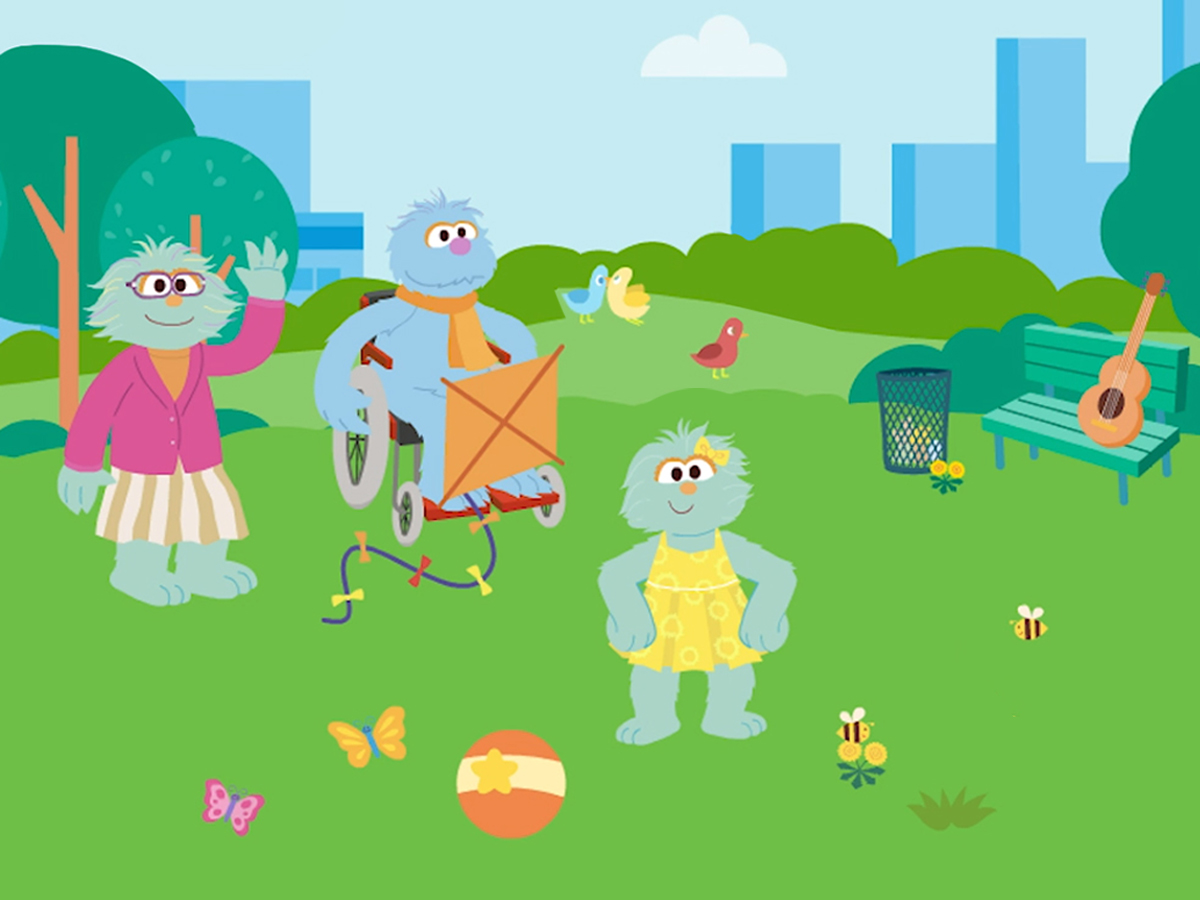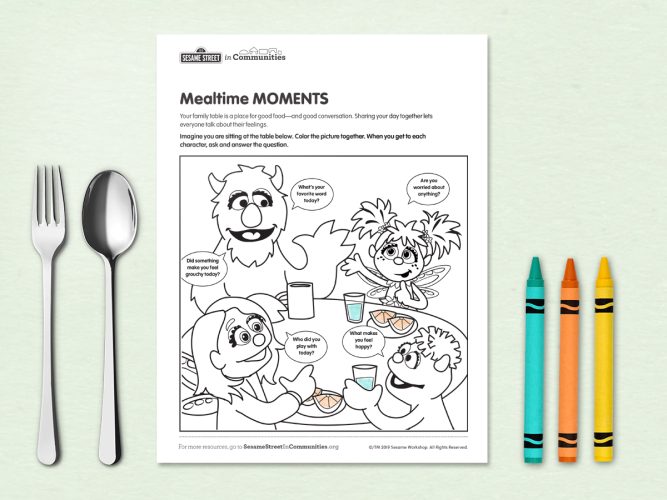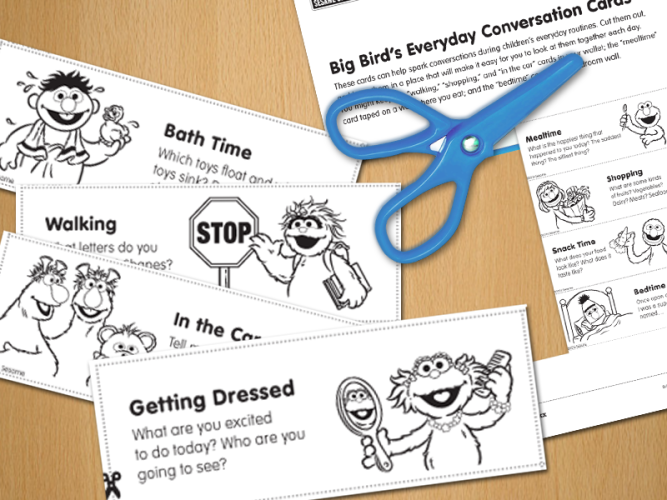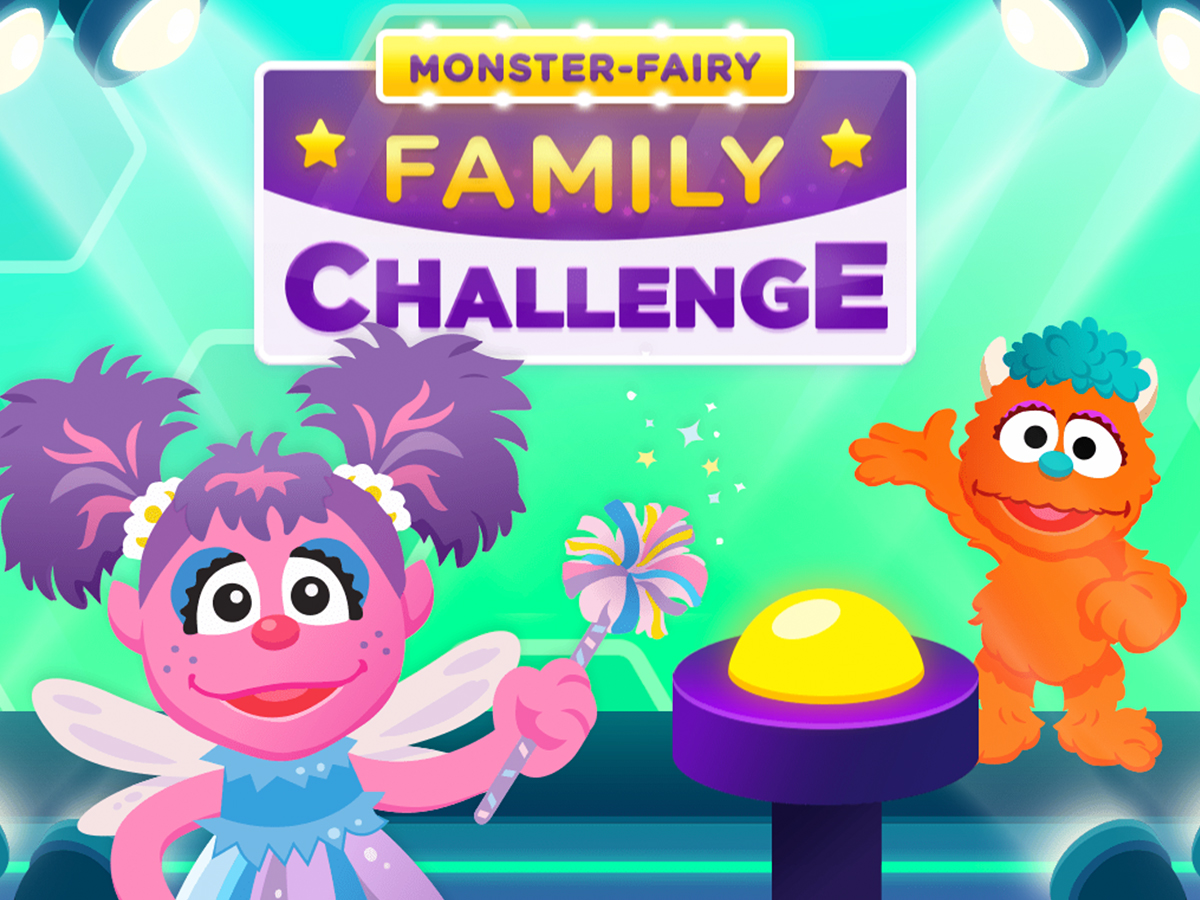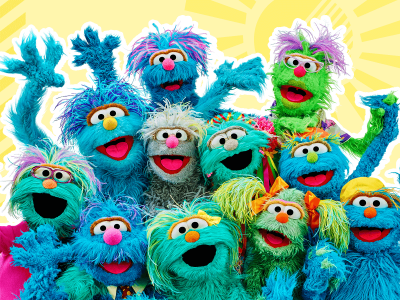
Session 7: Sunny Days
Offer playful ways for families to build stronger bonds.
1. Being Together
Being Together
Quality time doesn’t have to be a big ordeal. Spending little moments together in the morning, after school, or before bed—and, for grown-ups, while kids are napping—can be very meaningful.
Help families see how simple connecting can be.
- Stand at the front of the room, and ask for a volunteer to stand up and face you.
- Say, “Hello,” but don’t make eye contact, and use a bored tone of voice.
- Ask, “How did that make you feel?”
- Then, try again. This time, say, “Hello” while making eye contact, smiling, and using a sincere voice.
- Ask, “Now how do you feel?”
Discuss, as a group, how body language, tone of voice, eye contact, and presence can make others feel seen and valued. Invite families to practice smiling at each other. It might feel silly, and that’s okay!
Ask participants to share some ways their families connect with one another. Then suggest they try these phrases and questions. Encourage them to stand up and practice.
- Good morning! I’m excited to spend the day with you.
- What are you looking forward to today?
- What would you like to wear today?
- Did you learn anything new today?
- Tell me about a moment when you felt happy today. Did you have any other feelings?
- I really appreciate you.
- Thank you for all of your help.
- What’s one way I can help you today?
- I like living life with you.
Next, watch the Mi Familia: Sunny Day Song video with families.
After watching, encourage families to reflect on favorite activities or special times they spend together. Do they have a favorite tradition for holidays or special occasions? Is there a moment of the day or a memory that makes them especially happy? What does a good or “sunny” day look like?
Finally, introduce the Sunny, Cloudy, Stormy Days interactive. Let families know they can play this together to see how Rosita and her family spend time together on happy and not-so-happy days. Remind them that, even if the “weather” of the day is cloudy or stormy, a moment of quality time can be like a ray of light.
2. Talking Together
Talking Together
Everyday routines can inspire great conversations. Meals can be especially good times for talking, because they allow us to slow down and just be together. Host a meal for families (either pretend or real) and practice asking questions, listening, and sharing with one another. Use these playful ideas to encourage communication.
Set the table. Even before food hits the plate, families can work—and talk—together. Kids can set placemats, plates, cups, napkins, and silverware, counting as they go! Special touches like drawing name cards or picking fresh flowers can make everyday meals feel fancy and give kids an opportunity to share their talents with others.
Show gratitude. Meals provide a wonderful opportunity to give thanks. Families might say something they’re grateful for (like the cooking and yummy food!) or say a prayer of thanksgiving.
Serve and Share. Dishing up food is the perfect time for “dishing” about your day. As you serve food, ask a question. Then take turns answering (in between bites, of course!).
The Mealtime Moments printable and Everyday Conversation Cards can help spark conversations during meals. Families can keep a copy near the dining table or on the refrigerator. They might even draw their own conversation cards!
3. Playing Together
Playing Together
Playing, laughing, and joking around brings families together, and there are so many ways to play. Host a play party for families. Choose age-appropriate activities, like board games, blocks, art supplies, or costumes with props, and invite families to play! As families interact, help parents create deeper connections by prompting them with things to say or do. After some time, discuss how it felt, what they learned, and other ways to play together.
Offer these playful ideas:
- Use your imagination.
- Tell stories, each person acting out a different character.
- Use everyday objects, like boxes and blankets and pillows, to set a scene or build a fort.
- Play board games.
- Build with blocks.
- Play sports.
- Tell jokes.
- Act out a story.
- Make patterns at mealtimes.
- Hunt for shapes, letters, colors, or feelings.
- Have a family talent show.
- Draw with sidewalk chalk.
- Use masking tape to create indoor games, like hopscotch.
- Create a scavenger hunt around your home or neighborhood.
As a take-home activity, introduce the Monster Fairy Family Challenge interactive. If you have time, try a few challenges together. Then invite families to continue together at home. They might even make up their own challenges.
